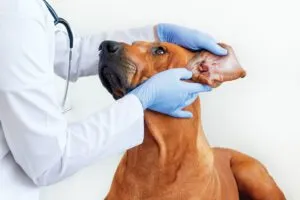If it’s saturated, isn’t it bad?
Fats are made up of fatty acids that fall into three categories – monounsaturated, polyunsaturated and saturated. Saturated fats, which are predominantly found in animal products such as meat and dairy and are solid at room temperature, have been linked to a host of health issues in people such as obesity, high cholesterol and increased risk of heart disease. As a plant-based saturated fat, coconut oil was once grouped with other unhealthy fats, and people were advised to avoid consuming it.
However, even though coconut oil is a saturated fat, it is not unhealthy. In fact, it contains numerous health benefits!
The chemical structure in coconut oil is quite different from the fat found in, say, a steak or a slab of butter – and that difference has huge implications for our health and our pets’ health.
Whereas most saturated fats are comprised of long chain fatty acids (LCFAs), coconut oil is comprised mainly of medium chain fatty acids (MCFAs), or medium chain triglycerides (MCTs). Our bodies metabolize (break down) and recognize medium chain fatty acids differently than long chain fatty acids, producing a very different effect.
Benefits of Coconut Oil
There are many reasons to let your pet indulge in some coconut oil every day. For example, we now know that, unlike animal-based saturated fats that contribute to heart disease, coconut oil is actually heart healthy!
Coconut oil also contains lauric acid, a saturated fatty acid that converts in the body to monolaurin, a monoglyceride compound with numerous beneficial properties, including anti-viral, anti-bacterial, anti-microbial, anti-fungal and anti-protozoal. Lauric acid actually destroys lipid-coated bacteria, fungus and viruses such as herpes, the measles, influenza, hepatitis C and HIV, ringworm and athlete’s foot.
In addition, studies show that MCTs such as those found in coconut oil provide a wide range of health benefits, including:
- Help with weight loss (MCTs increase metabolism, send signals of satiety and cannot be stored as fat)
- Improve digestion and absorption of fat-soluble vitamins
- Benefit the skin and coat
- Provide a rapid form of non-carbohydrate energy
Coconut Oil: The new “brain food”
But of all these benefits, my favorite is that coconut oil is scientifically proven to improve brain function in older dogs – findings that have important implications for people and animals.
In one study, 24 senior Beagles fed a diet supplemented with 5.5% MCTs showed significant improvement in cognitive ability within just one month. The study’s authors concluded that the MCTs (as contained in coconut oil) provided an alternative source of brain energy for the senior dogs.
As the body’s “supercomputer”, the brain requires a lot of energy, most of which is satisfied when our bodies metabolize glucose from the foods we eat. However, as we age, we metabolize glucose less efficiently, leaving a “gap” in the brain’s energy requirement. When this occurs, alternative sources of fuel become important to fill this gap and provide much-needed energy to the brain. This is where MCTs such as those contained in coconut oil can help save the day:
- Unlike regular fats (which the body metabolizes slowly), MCTs break down and absorb rapidly into the bloodstream, providing a quick source of non-carbohydrate energy.
- MCTs readily cross the blood-brain barrier, supplying up to 20% of a normal brain’s energy requirement.
- MCTs are important for ketone production, which serve as an additional source of “brain food”.
- MCTs help the body use omega-3 fatty acids more efficiently and increase omega-3 fatty acid concentrations in the brain (a good reason to give your dog both omega-3s and coconut oil)
What to Look for
When purchasing coconut oil, opt for unrefined, cold-pressed varieties. If possible, choose organic brands to avoid potential contamination from pesticides. Coconut oil does not need to be stored in the refrigerator, but since it is light sensitive (like all oils), it’s best to keep it in a dark cupboard. Dark glass containers are excellent storage choices, as they protect the oil from light while also ensuring that no BPAs (harmful chemicals found in many plastic containers), leach into the product.
How Much
Studies show that coconut oil fed as 10% or less of your dog’s diet poses no digestive or other health issues. The agreed-upon amount to start is 1/4 teaspoon for dogs less than 15 pounds and 1 tablespoon for larger dogs. You will need to balance coconut oil for weight management.
If your companion dog is doing well and not exhibiting any side effects such as weight gain, the standard threshold is 1 teaspoon per 10 pounds of body weight per day.
Since too much coconut oil can cause diarrhea, I advise exercising common sense and introducing it to your pet slowly.
References
Aldrich, G, 2009, “MCTs an overlooked tool in dog nutrition”. Feedstuffs, 81(35) :10.
Laflamme, DP, 2012, “Nutritional care for aging cats and dogs”. Vet Clin N Am: Sm An Pract, 42(4): 769-791, https://pubmed.ncbi.nlm.nih.gov/22720813/.
Pan, Y, Larson, B, Araujo, JA, Lau, W et al, 2010, “Dietary supplementation with medium-chain TAG has long-lasting cognition-enhancing effects in aged dogs”. Brit J Nutr, 103 (12): 1746-1754, https://pubmed.ncbi.nlm.nih.gov/20141643/.
Originally Published: April 4, 2013
Updated: May 11, 2024














